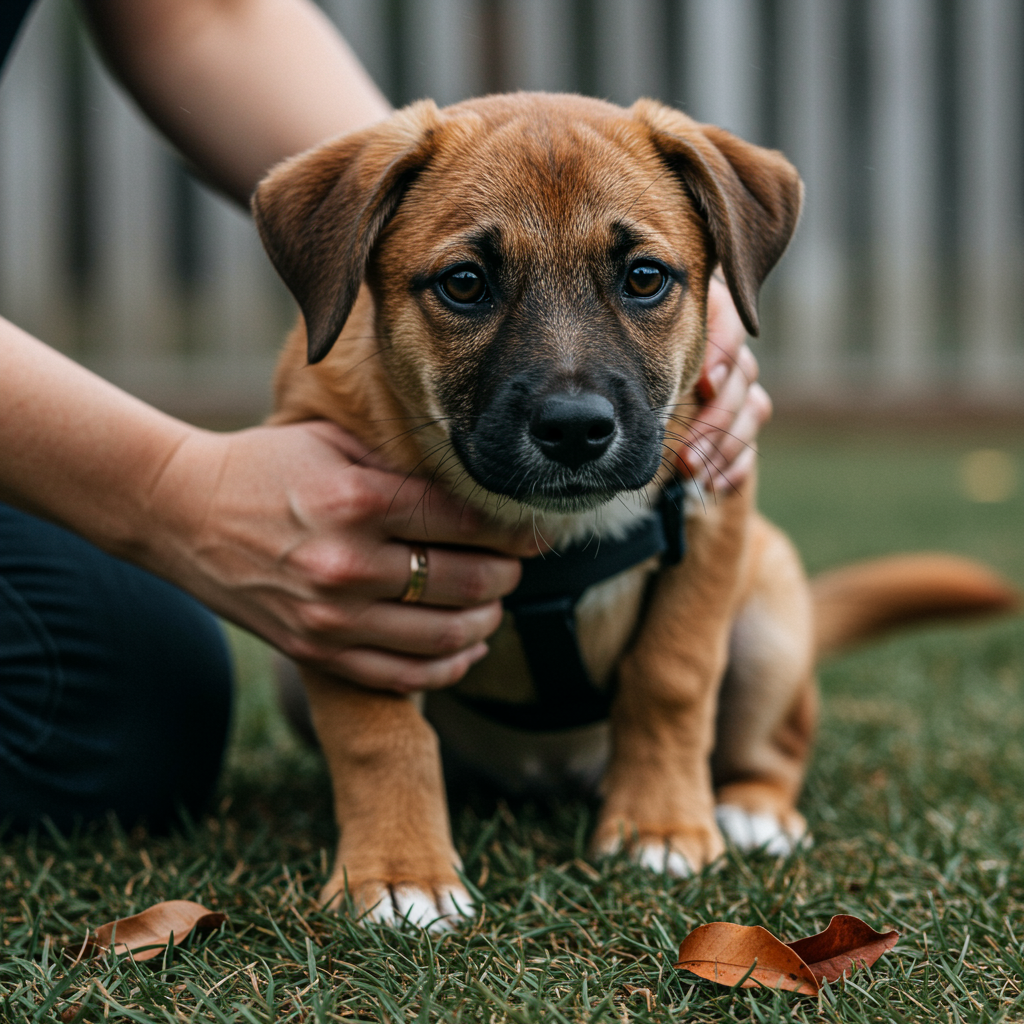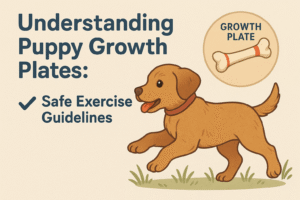What Are Growth Plates?
Growth plates, also known as epiphyseal plates, are critical components in a puppy’s skeletal development. They are areas of developing cartilage tissue near the ends of long bones, which gradually harden into bone as the puppy matures. These plates function by allowing the bones to lengthen as the puppy grows, contributing significantly to overall size and stature. Common locations for growth plates include the legs, hips, and shoulders, highlighting their pivotal role in supporting a balanced and healthy skeletal structure.
Timeline of Growth Plate Closure
The growth of puppies occurs in distinct stages, highly influenced by breed and genetics. Generally, growth plate closure occurs when the cartilage in the plates fully ossifies into bone, a process that can vary greatly between breeds. Smaller breeds often have growth plates that close as early as 6-12 months. In contrast, larger breeds can take up to 18-24 months. Factors influencing the closure timeline include breed size and genetic predispositions, which can be crucial in guiding appropriate exercise regimens.
Risks of Premature Growth Plate Closure
Premature closure of growth plates can lead to several health issues, impacting a puppy’s long-term development. When growth plates close too early, it can result in bone deformities, joint problems, and uneven limb growth. This condition can produce symptoms such as limping, pain when exercising, or visible asymmetry in the limbs. Early detection and intervention are critical to minimize these risks and to support a puppy’s healthy progression into adulthood.
Safe Exercise Guidelines for Puppies
Exercise is vital for a puppy’s health, but it must be tailored to suit their growth stages. Light activities like short walks and free play are perfect for young puppies. As they mature, incorporating controlled movements like gentle fetch games or swimming can be beneficial. Monitoring exercise intensity and ensuring a gradual increase are key to protecting growth plates from injury. Always balance activity with rest and recovery to avoid overexertion.
Exercises to Avoid During Growth Plate Development
Certain exercises should be avoided during the growth plate development phase to prevent undue stress. High-impact activities such as jumping from heights or intensive running can damage these delicate areas. Recreational activities like agility courses, though tempting, should be postponed until growth plates have fully closed. Instead, engage puppies in alternative exercises such as leash walking on soft surfaces or interactive play that doesn’t strain their developing joints.
Monitoring Your Puppy’s Growth
Regular veterinary check-ups are invaluable for ensuring your puppy’s growth and health. Vets can assess development accurately, spotting issues that might not be apparent to owners. At home, monitor changes in posture, gait, and appetite as these can indicate development concerns. Any signs of discomfort or irregular growth warrant a professional opinion. Engaging with your vet allows for tailored advice suitable to your puppy’s unique needs.
Conclusion
Understanding growth plates and their closure is integral to nurturing well-developed dogs. By adhering to safe exercise guidelines, prioritizing health checks, and remaining vigilant to changes, owners can greatly enhance their puppy’s quality of life.🐶 Always aim to consult a veterinarian to ensure the advice is right for your pet. As veterinary expert Dr. Kathryn Primm emphasizes, “Being informed about your pet’s unique growth and development needs prepares you to make the best choices for their lifelong health.”
Additional Resources
For further reading on puppy health and exercise, refer to resources like the American Kennel Club’s puppy care guidelines or the Veterinary Information Network for detailed insights. These organizations offer valuable information and tools to assist in the care and development of your furry friend.# Understanding Puppy Growth Plates: Safe Exercise Guidelines – FAQ
 What Exactly Are Growth Plates and Why Are They Important?
What Exactly Are Growth Plates and Why Are They Important?
Growth plates, or epiphyseal plates, are essential regions of cartilage located near the ends of a puppy’s long bones. These plates are crucial for proper skeletal development as they allow bones to lengthen, playing a vital role in determining the puppy’s eventual size and stature. Protecting these areas during development is vital to ensuring that puppies grow into healthy adult dogs.
At What Age Do Growth Plates Typically Close?
The age at which growth plates close can vary greatly depending on the breed and size of the dog. For smaller breeds, growth plate closure can start as early as 6 to 12 months. Conversely, larger breeds may experience closure from 18 to 24 months. This process is influenced by genetic and breed-specific factors, emphasizing the need for tailored exercise routines that consider these timelines.
What Are the Risks If Growth Plates Close Prematurely?
If growth plates close prematurely, it can lead to significant health issues, such as bone deformities, joint problems, and uneven limb growth. Such conditions may manifest through symptoms like limping, pain during exercise, or visibly uneven leg lengths. Early veterinary intervention is crucial in managing these issues and ensuring your puppy develops normally.
How Can I Safely Exercise My Puppy?
Exercise is essential for a puppy’s health but must align with their specific developmental stage. Engage your puppy in low-impact activities like short walks and playful interactions indoors. As your puppy grows, you can slowly introduce activities with more movement, like gentle fetch or swimming, but always prioritize moderation to protect delicate growth plates.
Which Exercises Should Be Avoided With Developing Puppies?
Avoid high-impact exercises that can stress growth plates, such as jumping from heights or intense running sessions. Activities like agility training should be reserved for after growth plate closure. Instead, opt for safe exercises such as controlled leash walking or interactive toys that promote gentle exercise without undue stress.
How Can I Monitor My Pup’s Growth for Potential Issues?
Regular veterinary check-ups are invaluable for tracking your puppy’s growth and overall health. At home, observe changes in gait, posture, and behavior as potential indicators of growth irregularities. Any signs of discomfort or unusual development should prompt a visit to the veterinarian for an assessment and guidance tailored to your puppy’s needs.
When Should I Consult a Veterinarian Concerning Growth Issues?
It is advisable to consult a veterinarian if you notice any signs of discomfort, limp, or developmental asymmetry in your puppy. Regular check-ups are essential to catch potential growth-related issues early. A vet can provide personalized advice and consider breed-specific factors to ensure the healthiest growth trajectory for your puppy.
Can Diet Influence Puppy Growth and Development?
Yes, diet plays a crucial role in supporting healthy growth in puppies. A balanced diet, rich in essential nutrients, is vital for bone and joint health. It’s important to feed your puppy a diet suitable for their breed and size, potentially collaborating with your veterinarian to develop a nutrition plan that complements their developmental stage and lifestyle.


 What Exactly Are Growth Plates and Why Are They Important?
What Exactly Are Growth Plates and Why Are They Important?





